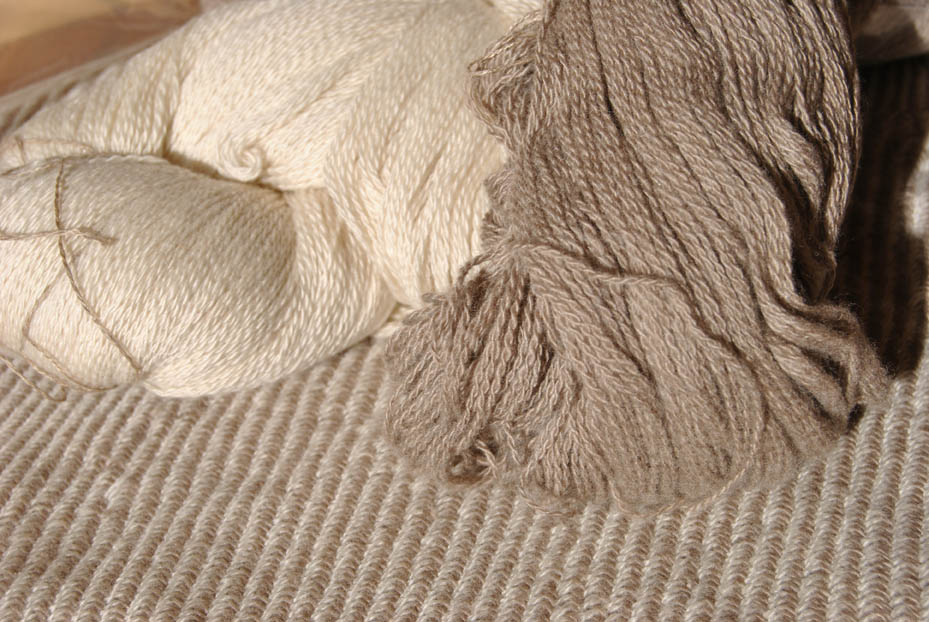Young and not so young, they’re betting on themselves. They leave a job in the city, or lose it, but they don’t lose hope and decide to recycle themselves, forsaking desk jobs to venture into a market that is waiting to be discovered: breeding alpacas and cashmere goats in Italy. Altogether, about five hundred families have invested time and money in one of these luxury species. In spite of everything, untouched by the crisis.
Riccardo Romanelli and Rossella Testi moved from Florence to Santa Fiora, a small town on Mount Amiata. In ten years they can boast that they have created one of the largest alpaca farms in Italy. “I’m a mechanical engineer and a few years ago I lost my job. It was all I knew how to do, but I loved nature and wasn’t afraid of taking chances either. My wife and I invested in a little bit of land and four alpacas. Now we have 25 acres and 60 specimens of all ages and colors”, explains Riccardo Romanelli. A male can be worth as much as 1500-1600 euros, a female even up to 4000 euros.
They are easy to raise and don’t require a lot of cost and effort to maintain. “They eat brambles and weeds, or a bale of hay like horses. They need shelter in the winter but can withstand very low temperatures. The only expenses are the veterinarian and shearing costs, which average about 100 euros a year” Romanelli continues. A female only produces one cria (as the offspring are called) at a time, which matures in about 12 months, when the animal can already produce almost 6.5 lbs. of wool.
The processed wool is worth 15-20 euros a lb. The first alpacas here in Santa Fiora came from Peru; the others are all Italian. “Ours is a short chain farm: from the alpaca to the finished product. When the staple comes back scoured and spun we decide what to do with it. From blankets to gloves, from sweaters to scarves for sale sold at craft markets” continues Romanelli. We created the website fioralpaca.it and have developed a number of summer events devoted to children and their parents interested in learning more about this quadruped that is so similar to the llama, but much more valuable.
Alberto Agnesina and Francesca Di Donato are another professionally recycled couple. They are just getting started. Four years ago they left Milan to go and live in Valsesia with 13 goats from Kashmir, in a ruined farmhouse in the middle of the forest, at an altitude of 2,500 ft. ìOur little herd grew to 27, but then, considering the crisis, we sold 14 in response to the great demand for their use in the recovery of abandoned government landî, explains Alberto Agnesina. The cashmere goat is a rustic animal worth from 250 to over 1000 euros and does not cost much to maintain (about 80 euros a year).
In addition to the small amount of fleece they produce, they are especially useful for clearing the land. That’s the new business. “These goats devour brambles and nettles and are used in places that are difficult to reach with machinery, or by people who want to restore an abandoned area organically. They are animals that come from the mountains of Mongolia, used to living at altitudes of 15,000 ft. They need 7-10,000 sq.ft. of pasture land, but no fences. What is essential is to provide shelter. Even just a roof over them, because cashmere goats don’t produce lanolin and can’t stand the rain”, continues Agnesina.
As regards the staple, the goat is combed once a year and every animal yields about 10 oz. of cashmere. 60% is discarded in processing and that is the reason for the high cost of the finished product, about 80 euros for a couple of ounces. “We aren’t earning much now but we expect an economic return in the coming years when the herd grows and we can start the short chain. For now we’re happy to live with our goats, the teaching farm, the sale of the animals and products with the Valsesia Cashmere trademark”, concludes the breeder.

